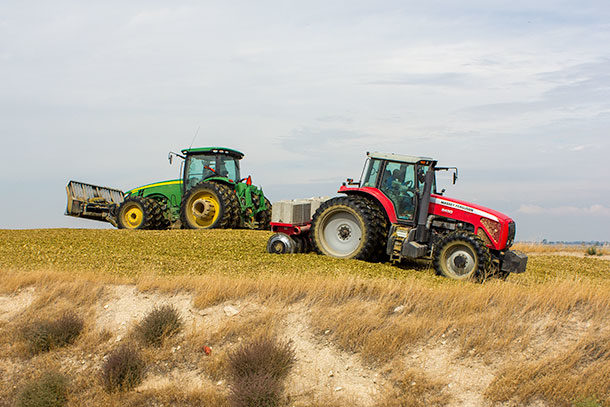When weather and growing conditions are less than ideal, it can be hard to know what steps to take to make the most of a subpar forage crop.
To address some of these concerns, Renato Schmidt presented a webinar titled “Making Silage Under Adverse Conditions” as part of this year’s Silage for Beef Cattle Conference jointly held by the University of Nebraska – Lincoln, Lallemand Animal Nutrition and Iowa State University Extension. Schmidt, a technical services – forage team member with Lallemand Animal Nutrition, covered five common scenarios under which silage production is unfavorable and provided several tips on how to minimize some of the less desirable consequences.
1. Harvesting corn too early or too late
When corn is harvested too early, it still contains a lot of moisture, which typically leads to a loss of soluble nutrients that run off with the water left in the plant. Additionally, an excess amount of moisture can lead to prolonged fermentation, which causes a loss of dry matter (DM) as bacteria produce more acid and therefore expend more nutrients.
Conversely, harvesting too late can lead to a loss of DM and nutrients because air is trapped in the plant and proper packing is difficult. There is also less available starch for digestion, despite a higher starch content, because most starch is accumulated in the kernels. In case of a late harvest, processing becomes critical.
To combat these issues, consider whether to harvest earlier or later based on desired silage traits, and focus on what is more important: tonnage, protein or nutrient content. Also, consider that at least one study found that increased storage time increases digestibility of starches.
2. Making haylage outside of the recommended DM stage
If haylage is too wet, there is a higher probability of having issues with clostridia, a highly resilient anaerobe. Clostridia is a major concern for dairy producers as it can contaminate milk and may not go away even with pasteurization. Schmidt explained, clostridia has a putrid smell, “some people like to say it smells like death.” In addition to this, haylage that is too wet “is characterized by protein degradation; a lot of the by-products are toxic,” Schmidt noted. DM and energy losses are also a concern.
Dry haylage has been found to limit fermentation, encourage mold growth and cause heat-damaged proteins, which lead to an effect often described as “caramelization.”
When dealing with haylage that is too wet, it is important to use a homolactic inoculant and provide adequate substrates for fermentation. Clostridia is sensitive to a low pH and high osmotic pressure. Care should also be taken to avoid contamination with clostridial spores. In the case of dry haylage, interruptions when packing should be avoided to inhibit yeast and mold production.
3. Drought-stressed forage
The primary concerns with drought-stressed forage are low starch content, low DM yield caused by restricted photosynthesis, heavy insect pressure, potential for higher traces of aflatoxins and elevated nitrate levels. With respect to nitrates specifically, animals convert them to nitrites, which interfere with blood hemoglobin to prevent normal oxygen uptake in blood. To address this, forage should be tested before chopping and feedout. When testing before chopping, if nitrates are a concern, the cutter bar should be raised, as the highest concentration of nitrates is present in the bottom third of the plant. Ensiling also reduces nitrates by about 40%.
4. Effects of flooding on silage
A study conducted following Hurricane Irene in 2011 found that 50% of affected plants had an abnormal appearance. It also found that one third of plants affected by flooding had an abnormal smell and that many plants died in the two or three days following the hurricane, due to a lack of oxygen in the roots. These findings are important because they can help gauge the impacts of flooding on silage production. For example, physically damaged plants are more likely to contain increased levels of aflatoxins and mycotoxins. To mitigate this, the plants should be harvested sooner, as mycotoxins increase with more time spent in the field. Crops should also be inoculated as this can improve feedout stability and decrease the presence of “opportunistic microbes,” which also helps to reduced aflatoxin levels.
5. Ensiling frost-damaged corn plants
In the case of frost-damaged silage, evaluate the extent of the damage. This would include checking for moisture levels and DM. Harvesting should be done at 32% DM. Low temperatures during harvest and storage lead to aerobic stability. Schmidt said, “Because very little acid will be produced, we should expect aerobic instability during feedout … If you can segregate the storage of compromised crops, that is advisable.”









